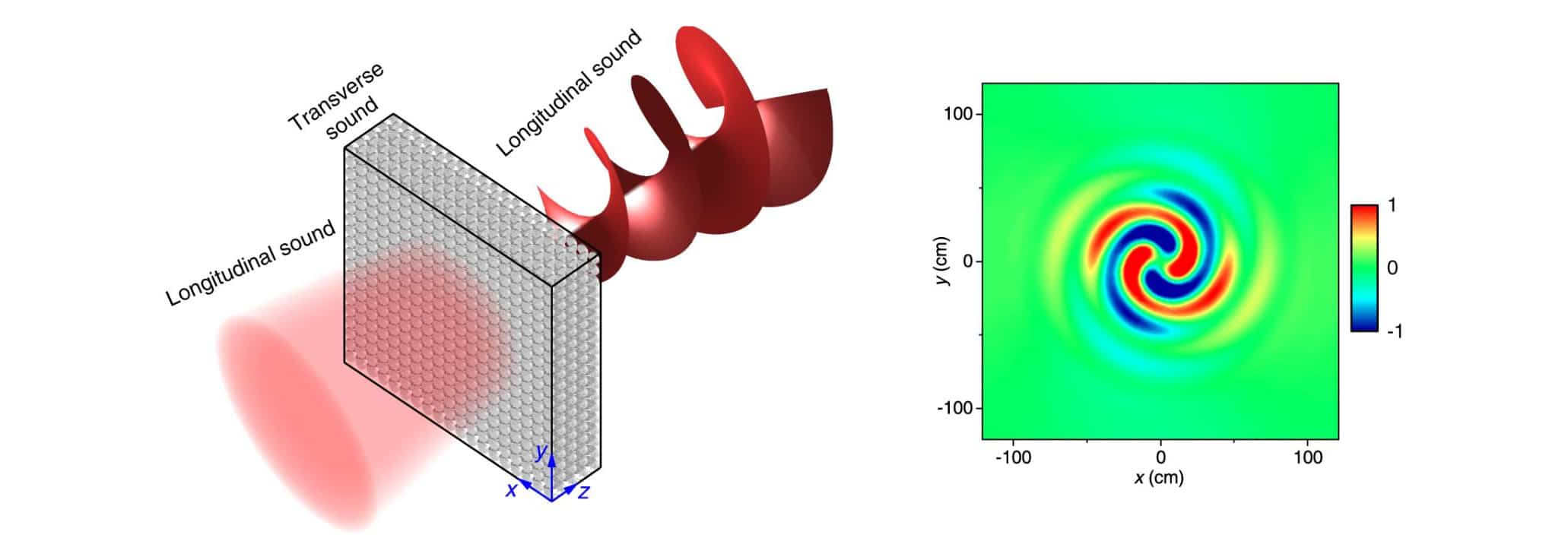Behavior of transverse sound like scalar waves
In my summary on scalar waves, I explain that the scalar wave is longitudinal and travels in a spiral wave (vortex). A research team from the City University of Hong Kong (CityU) has just demonstrated that the airborne sound wave could vibrate transversely. This means that it can carry both spin and orbital angular momentum like light and scalar waves.
This research was carried out by Dr. Wang Shubo, Assistant Professor in the Department of Physics at CityU, and conducted in collaboration with scientists from Hong Kong Baptist University (HKBU) and Hong Kong University of Science and Technology (HKUST). A publication has been made in Communication Nature, entitled “Spin-orbit interactions of transverse sound”.
Cells in vortex to make the sound transversal
To be able to transform the usual longitudinal displacement of sound into a transverse displacement, the sound passed through a network of cells. Each cell composed of 6 chiral structures, induces a vortex in the sound. This complex network of resonators has been called "micropolar metamaterial" constituting "meta-atoms".
Theoretical calculations have shown that the collective movement of these "meta-atoms" of air produces a shearing force, which gives rise to the transverse sound with spin-orbit interactions inside this metamaterial. This theory has been verified by experiments conducted by Dr. Ma Guancong's team at HKBU.
Using this metamaterial, they demonstrated for the first time two types of spin-orbit interactions of sound:
- One is the momentum-space spin-orbit interaction which gives rise to a negative refraction of transverse sound, which means that sound bends in opposite directions as it passes through an interface.
- Another is spin-orbit interaction in real space which generates sound vortices under the excitation of transverse sound.





"It's just a precursor. We plan further explorations of the intriguing properties of transverse sound,” said Dr. Wang. “In the future, by manipulating these additional vector properties, scientists may be able to encode more data into transverse sound to break the bottleneck of traditional acoustic communication through normal sound waves.”
The interaction of spin with orbital angular momentum allows unprecedented sonic manipulations via its angular momentum. “The discovery may pave the way for the development of new applications in acoustic communications, acoustic sensing and imaging,” he added.
Reference: “Spin-orbit interactions of transverse sound” by Shubo Wang, Guanqing Zhang, Xulong Wang, Qing Tong, Jensen Li and Guancong Ma, October 21, 2021, Nature Communication.
DOI : 10.1038/s41467-021-26375-9
Dr. Wang is the first and corresponding author of the article. Dr. Ma is another corresponding author. Collaborators include Professor Li Jensen of the Hong Kong University of Science and Technology, CityU PhD student Ms Tong Qing, and other HKBU researchers.
The work was supported by the Research Grants Council of Hong Kong and the National Natural Science Foundation of China.

